
(Lalo Alcaraz/CALÓ News)
“I feel we have been forgotten and put on the back burner,” Laura Ceballos, the Venice Mexican American Traqueros Monument Committee lead organizer, told CALÒ News.
Ceballos, 53, who was born and raised in Venice, was referring to the committee's 7-year effort to honor the Mexican and Mexican-American workers, known as traqueros, who for several decades were instrumental in building rail lines in Los Angeles, including Venice and other cities across the West.
Since 2017, Ceballos and other committee members have been organizing the installation of the Venice Traquero monument, a bronze statue to commemorate the traqueros, many of whom lived in Venice.
After many years of community organizing, the monument proposal was approved by the Venice Neighborhood Council in 2020 and by the Los Angeles City Council in May 2021. But almost 4 years later, the monument hasn’t been finalized or even broken ground.
The monument will be displayed in Venice’s Windward Circle near the beach and boardwalk, located in L.A.’s Council District 11 (CD-11), but when and how long will it take?
“I hope soon,” Ceballos said. “This is important history and since it's been so long, our community has been asking about it.”
In 2021, former Councilmember Mike Bonin (CD-11), who represented the area then, presented the motion to install the monument. Councilmember Kevin de León (CD-14) seconded the motion, which was approved and passed.
A year after introducing the motion, Bonin council seat went to Traci Park, a former attorney elected in 2022. Park has never publicly announced her support for the Venice Traquero monument. Ceballo said the change in leadership is the primary reason why the monument has not been finalized.
“She won't publicly support the project. The [Venice Mexican American Traqueros Monument] Committee has emailed her office various times, and she never gets back to us,” Ceballos said. “She would not give me a letter of support.”
According to Ceballos, the project was left in limbo since Park came into office.
The project has been and still is in the permit process for years.

Mexican and Mexican American laborers were instrumental in building the railroad infrastructure. Photo courtesy of Pacific Electric Magazine
Many of the permits needed for the finalization of the monument come from the Los Angeles Bureau of Engineering (BOE), an entity that is responsible for the planning, design and construction management of public buildings, infrastructure and open space projects.
One of the permits still needed from the BEO is the Revocable R Permit, which, if granted, allows structures like the traquero monument to be in the public right-of-way, area where streets and sidewalks are located and are controlled by a public entity.
Ceballos said that although she knows that the completion of the project is not all in the hands of Park and that many county departments work together to install the monument, she believes Park holds an important responsibility to help expedite the process—a process that for her and the committee has lost its way to fruition.
“We wish she would publicly support the traquero monument, but more than anything, we need her to be involved, as involved as she has been of other historic [landmarks] in the district, like the Marilyn Monroe historic house,” she said.
Ceballos was referencing Park’s support that led to the city council voting decision that stopped the demolition of Monroe's first house also in her district.
According to Ceballos, the statute now qualifies for many grants both at the city and county level, but many of them need to be initiated or applied for by Parks, including some in the LA’s Cultural Art Department.
Similar to the history of rancheros or farm workers in L.A. and Southern California, the history of the traqueros continues to be ignored in schools and surrounding L.A. communities
Since the late 1800s, after the Civil War, goods were in high demand, especially in the West, in places like California, where towns and cities were growing rapidly. But as demand for goods grew, so did the demand for labor and transportation. Mexican and Mexican American laborers were instrumental in building the railroad infrastructure needed to connect different places and transport the goods these communities needed.
“Traqueros represented the most invisible sector of the railroad industry, despite the fact that between 1880 and 1930, Mexican track workers constituted almost two-thirds of the track labor forces in the Southwest, Central Plains, and Midwest,” Jeffrey Marcos Garcílazo wrote in his book “Traqueros: Mexican Railroad Workers in the United States, 1870-1930.”
Although the labor of traqueros was underpaid and many worked in harsh conditions, many immigrants, Mexicans and Mexican-Americans, were devoted to the workforce and settled in the neighborhoods and cities, like Venice, that was in close proximity to the railroads and their jobs.
For the Venice Mexican American Traqueros Monument Committee, many of its members are descendants of traqueros, having a visual landmark of this history is not only important to shed light on what the traqueros were but also the multigenerational excellence that came after them.
“The employers of many traqueros encouraged Mexicanos to bring their families along so that they would stay longer for work instead, and many did; many brought their families and their children,” Ceballos said. “So the monument that we hope to see soon is not just about traqueros; it also highlights the traqueros about families, the monarch of the families, the women who emotionally supported the hard work of the traqueros and their children who carried their legacy and heritage.”
The traquero monument, initially designed by Mexican artist Jorge Marín, depicts a bronze sculpture of a traquero standing strong on a railroad as he grasps his daughter’s hand, with his son on his shoulders and his wife at his side. The Traquero Monument project, which will cost $6500,000 to complete, was chosen to live in the Windward Circle because the Pacific Electric Railroad once passed through Venice on Pacific Avenue and Windward Avenue.
In 2021, Councilmember De Leon publicly announced his support for the project.
“A lot of folks don't know that if you're on the Metrolink, if you're going up and down the coast of California if you're moving human beings or moving goods, those railroads were built with the sweat and the lives of Mexican and Chinese immigrants,” he said.
Former Councilmember Gil Cedillo, whose grandfather was a traquero, also said the building and installment of the monument would be "significant for the Mexican American community."
Since then, other governments and city officials, as well as community leaders, have also expressed their support for the monument, such as the Mexican Consulate of Los Angeles, the League of United Latin American Citizens, Assemblymember Tina McKinnor (California District 61), U.S. Congressman Ted Lieu, Senator Ben Allen of Santa Monica, UCLA and Santa Monica College.
Ceballos told CALÒ News that when the city council first approved the motion in 2021, the monument was forecast to be ready by 2024. Today, less than two months before the end of the year, that is not likely to happen. According to a Los Angeles Cultural Affairs Department meeting in August 2023, the project is “to be completed in 2025 or 2026,” with no official date specified.

What the traquero monument is expected to look like. The monument was designed by Mexican artist Jorge Marín. Photo courtesy of Laura Ceballos
Ceballos said that more than ever, there is an urgency to finalize the monument as soon as possible because they want the community to see the statue in its full form, especially at a time when there’s been an acceleration of gentrification in Venice.
“This is very important and vital to the Venice community, especially with the gentrification because our history is L.A. history,” Cebalo said. “Venice is very diverse and everyone should feel represented and acknowledged and there's less and fewer spaces for that now.”
One of the most prominent and constant supporters of the project has been the labor leader and civil rights advocate, Dolores Huerta.
Huerta, currently 94, expressed the importance of the monument a couple of years ago.
“This is so important because we have to honor the working people of our country, who are often ignored, disrespected and forgotten. For the people whose grandfathers and great-grandfathers worked on the railroads, it gives them a sense of dignity,” she said.
The Venice Mexican American Traqueros Monument Committee has been organizing fundraisers and events to gather money that can help pay for the monument and will continue to do so.
Park has been previously accused of unlawfully stalling and blocking other projects within that district, including Venice Dell, a housing project for low-income people.
CALÒ News reached out to Park, de Leon, and the Los Angeles Bureau of Engineering, both via email and calls, and has not given any comment at the time of publication.

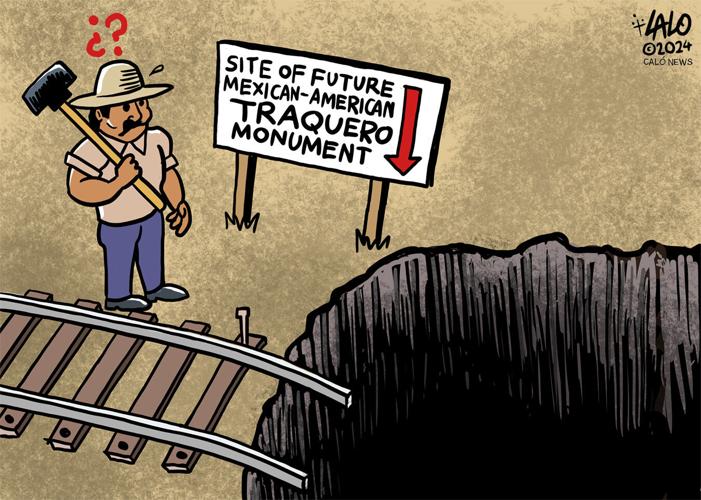
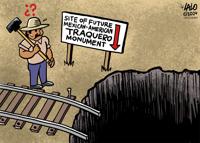
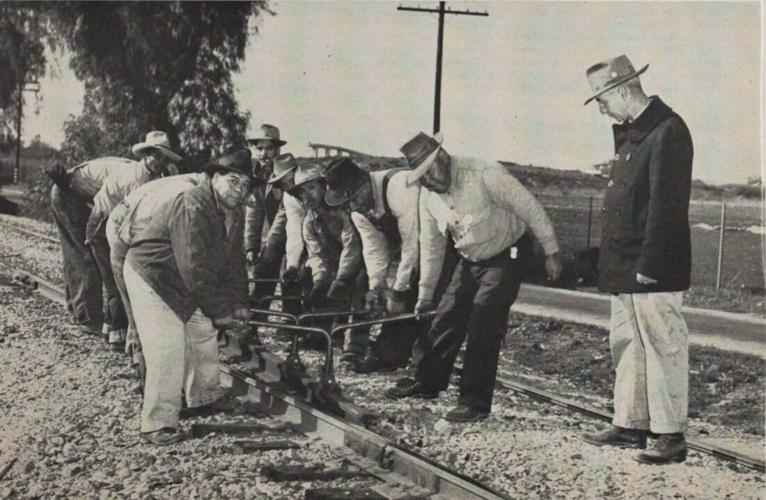
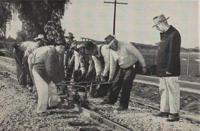
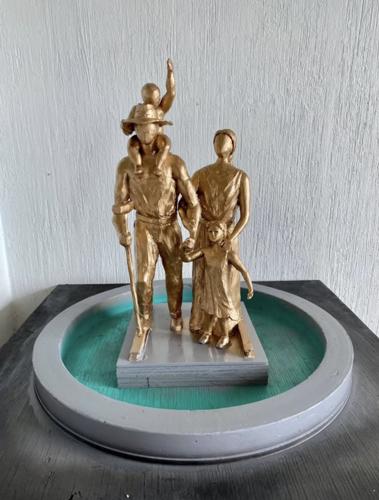
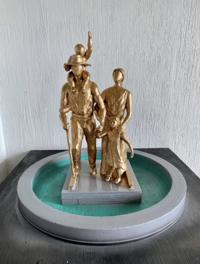

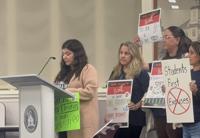

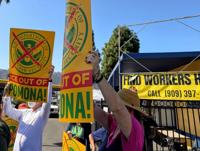



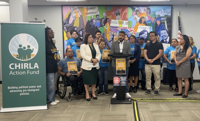
(0) comments
Welcome to the discussion.
Log In
Keep it Clean. Please avoid obscene, vulgar, lewd, racist or sexually-oriented language.
PLEASE TURN OFF YOUR CAPS LOCK.
Don't Threaten. Threats of harming another person will not be tolerated.
Be Truthful. Don't knowingly lie about anyone or anything.
Be Nice. No racism, sexism or any sort of -ism that is degrading to another person.
Be Proactive. Use the 'Report' link on each comment to let us know of abusive posts.
Share with Us. We'd love to hear eyewitness accounts, the history behind an article.